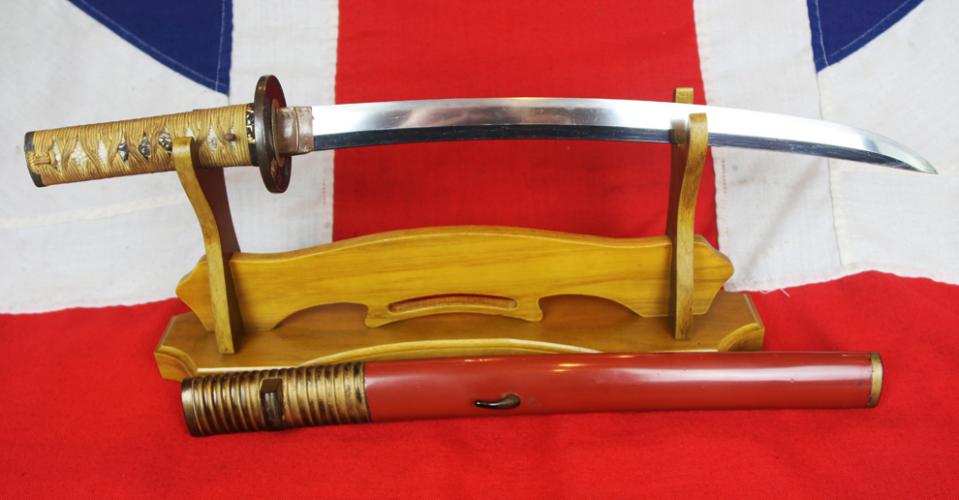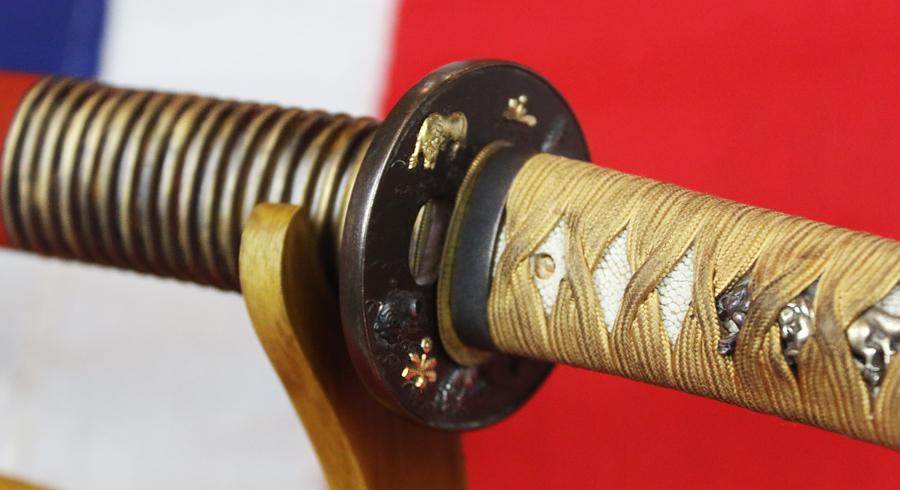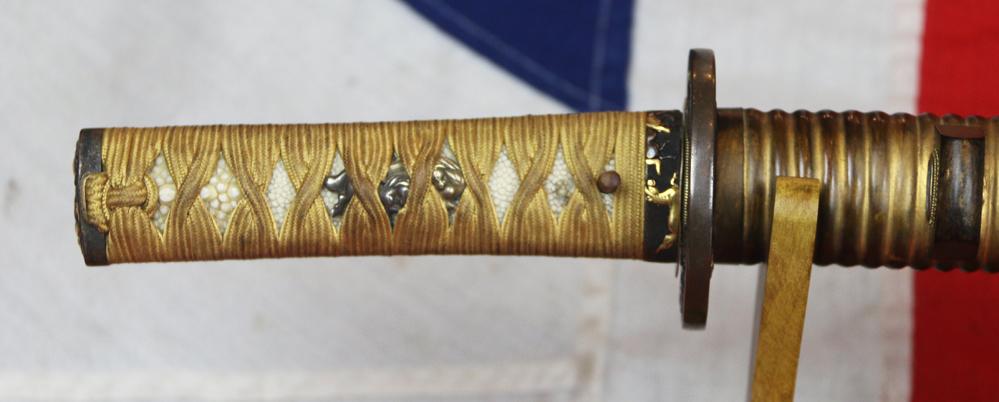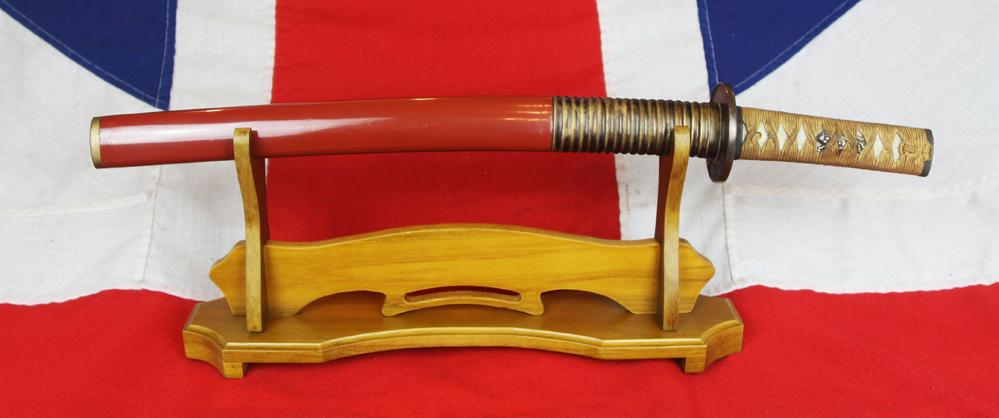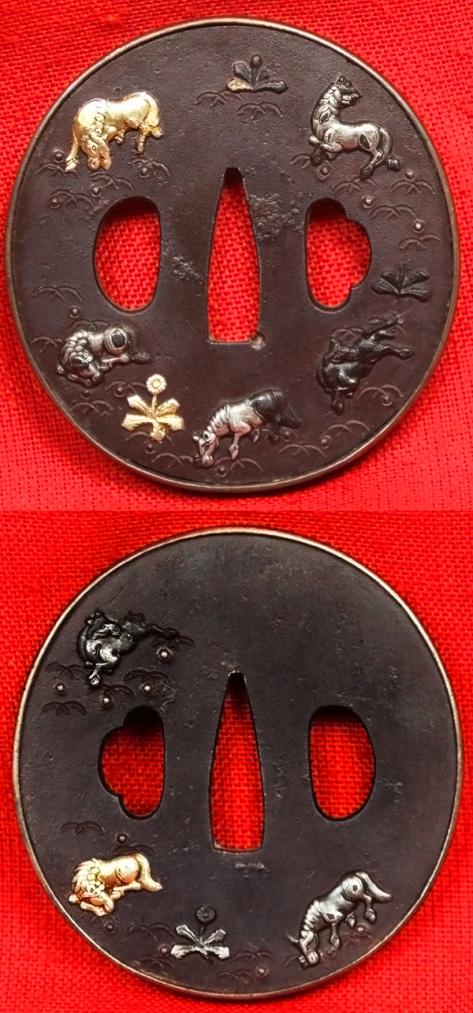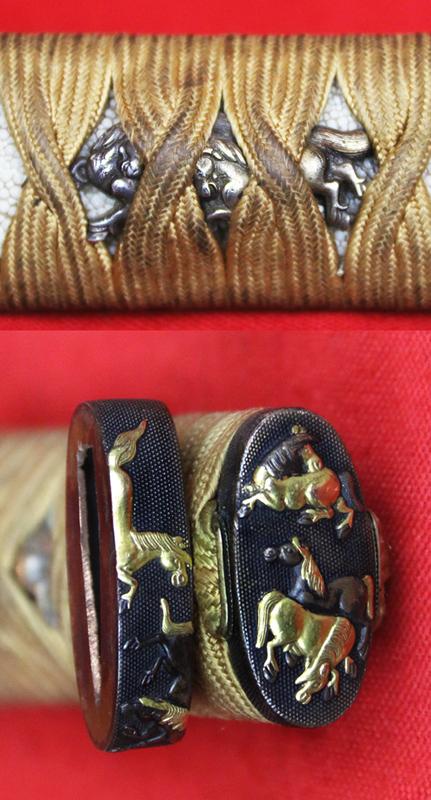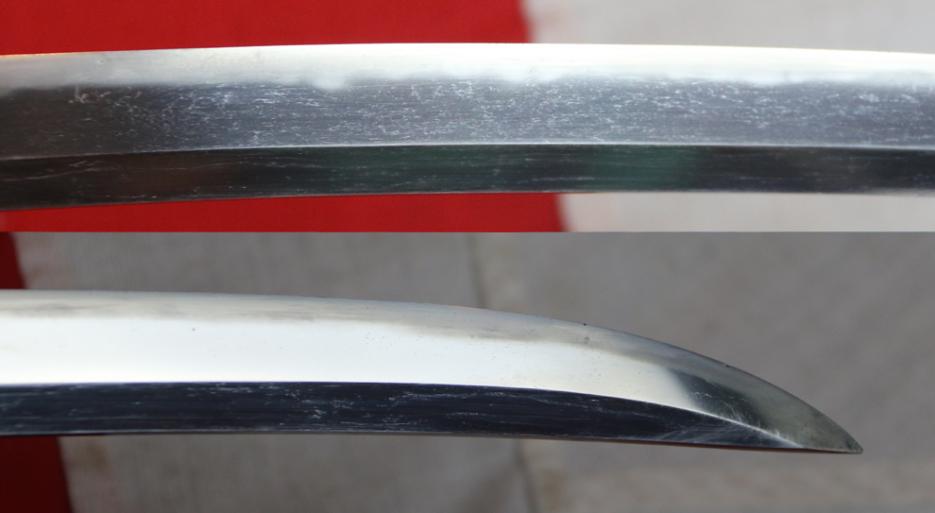A Simply Stunning 15th Century Sengoku Period Wakizashi Samurai Short Sword Circa 1480 With Shobu Zukuri Form Blade
Mounted in wonderous, original, full suite of Edo period mounts based entirely on pure gold and silver ponies, made somewhat in the fashion of a very famous set by Yokoya Somin. The most elegant shobu zukuri iris leaf form blade has to be one of the most beautiful blade styles ever made and is rarely seen. Shakudo nanako and gold fuchi kashira, large silver pony menuki under gold silk on giant rayskin. Matching tsuba with gold and silver ponies. cinnabar lacquer saya with ribbed top section with rubbed gold lacquer. The koto blade has wonderful grain and an undulating hamon. Shakudo is a billon of gold and copper (typically 4-10% gold, 96-90% copper) which can be treated to form an indigo/black patina resembling lacquer. Unpatinated shakudo Visually resembles bronze; the dark color is induced by applying and heating rokusho, a special patination formula.
Shakudo Was historically used in Japan to construct or decorate katana fittings such as tsuba, menuki, and kozuka; as well as other small ornaments. When it was introduced to the West in the mid-19th century, it was thought to be previously unknown outside Asia, but recent studies have suggested close similarities to certain decorative alloys used in ancient Egypt, Greece, and Rome. Wakizashi have been in use as far back as the 15th or 16th century. The wakizashi was used as a backup or auxiliary sword; it was also used for close quarters fighting, and also to behead a defeated opponent and sometimes to commit ritual suicide. The wakizashi was one of several short swords available for use by samurai including the yoroi toshi, the chisa-katana and the tanto. The term wakizashi did not originally specify swords of any official blade length and was an abbreviation of "wakizashi no katana" ("sword thrust at one's side"); the term was applied to companion swords of all sizes. It was not until the Edo period in 1638 when the rulers of Japan tried to regulate the types of swords and the social groups which were allowed to wear them that the lengths of katana and wakizashi were officially set.
Kanzan Sato, in his book titled "The Japanese Sword", notes that the wakizashi may have become more popular than the tanto due to the wakizashi being more suited for indoor fighting. He mentions the custom of leaving the katana at the door of a castle or palace when entering while continuing to wear the wakizashi inside. Wakizashi were worn on the left side, secured to the obi waist sash. The Sengoku period Sengoku Jidai, "Warring States period") is a period in Japanese history of near-constant civil war, social upheaval, and intrigue from 1467 to 1615.
The Sengoku period was initiated by the Ōnin War in 1467 which collapsed the feudal system of Japan under the Ashikaga Shogunate. Various samurai warlords and clans fought for control over Japan in the power vacuum, while the Ikkō-ikki emerged to fight against samurai rule. The arrival of Europeans in 1543 introduced the arquebus into Japanese warfare, and Japan ended its status as a tributary state of China in 1549. Oda Nobunaga dissolved the Ashikaga Shogunate in 1573 and launched a war of political unification by force, including the Ishiyama Hongan-ji War, until his death in the Honnō-ji Incident in 1582. Nobunaga's successor Toyotomi Hideyoshi completed his campaign to unify Japan and consolidated his rule with numerous influential reforms. Hideyoshi launched the Japanese invasions of Korea in 1592, but their eventual failure damaged his prestige before his death in 1598. Tokugawa Ieyasu displaced Hideyoshi's young son and successor Toyotomi Hideyori at the Battle of Sekigahara in 1600 and re-established the feudal system under the Tokugawa Shogunate. The Sengoku period ended when Toyotomi loyalists were defeated at the siege of Osaka in 1615.
The Sengoku period was named by Japanese historians after the similar but otherwise unrelated Warring States period of China. The Edo period habaki small copper-gilt blade collar has been perfectly restored and we shall photograph it soon. The photos that show it still in place see photos 2 and 9 are before it was restored.
Code: 23939
6750.00 GBP


